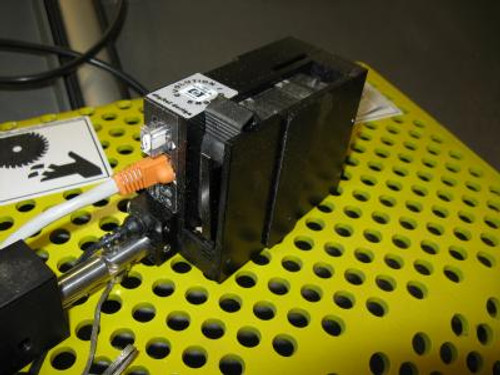Product Description
Cameron Automation Quick Rip
The Quick Rip is a complete rip saw optimization system in a simple and compact package. Virtually the same footprint as an operator hand feeding with a stack of lumber; the Quick Rip also positions the operator away from the rip saw for increased safety, and allows for more accurate board positioning. Based on the time tested design of the Automated Opti-Rip, the Quick Rip utilizes the same technology without the need for expensive material handling. Just getting into rip optimization? The Quick Rip allows you to make a small initial investment and is fully expandable up to the Automated Opti-Rip, allowing the machine to grow with your business.
Advantages:
- Increases Yield 5-10%
- Boards Can be Fed Skewed for Maximum Yield
- Feeds Lumber Automatically
- Smallest Foot Print of Any Optimizing System
- Software Includes: Simulations & Arbor Set Up
- Optional Automatic Skewing for Even Higher Yield
Customers who will benefit from the Quick Rip:
- Those who currently have small to mid sized ripping operations.
- A fixed arbor gang saw 24" to 40" wide or movable blade saws
- Production rates between 5,000 and 21,000 bd. ft.
The Quick Rip system works as follows: An operator places the boards, one at a time, on a servo-controlled series of the belts. The belts then accelerate the board to be processed past multiple sensors that measure the board every foot for the length and width, to determine its full profile. Next, the belts accurately position the board under a series of laser lights, presenting the operator with the optimum rip combination based on the measured width.
The operator can then choose an alternate rip pattern, fine tune the positioning and/or skew the board to the angle that will result in the optimum rip. With the optional Auto Skew feature, this can be done automatically while the operator is loading the next board. When the operator is happy with the positioning of the board, a button is pressed and the belts then position the board in front of the rip saw where a series of pinch rollers lift the board and feed it into the saw. A major advantage to this novel method is that lumber can be skewed on the conveyor, resulting in an increase in yield.
Existing gang rip saw optimization systems incorporate a straight fence, usually working in conjunction with cant rollers, to position the lumber before it enters the saw. Unfortunately, this orientation is not always the proper orientation to achieve maximum yield. The Automated Opti-Rip Servo Infeed solves this problem by using a precision servo-controlled belt system to position the lumber from the belt and feeds it into the saw, maintaining its orientation.












